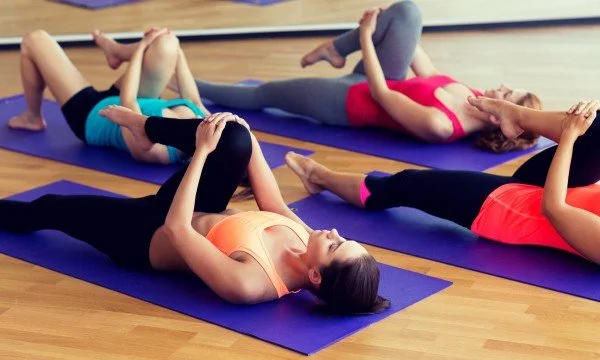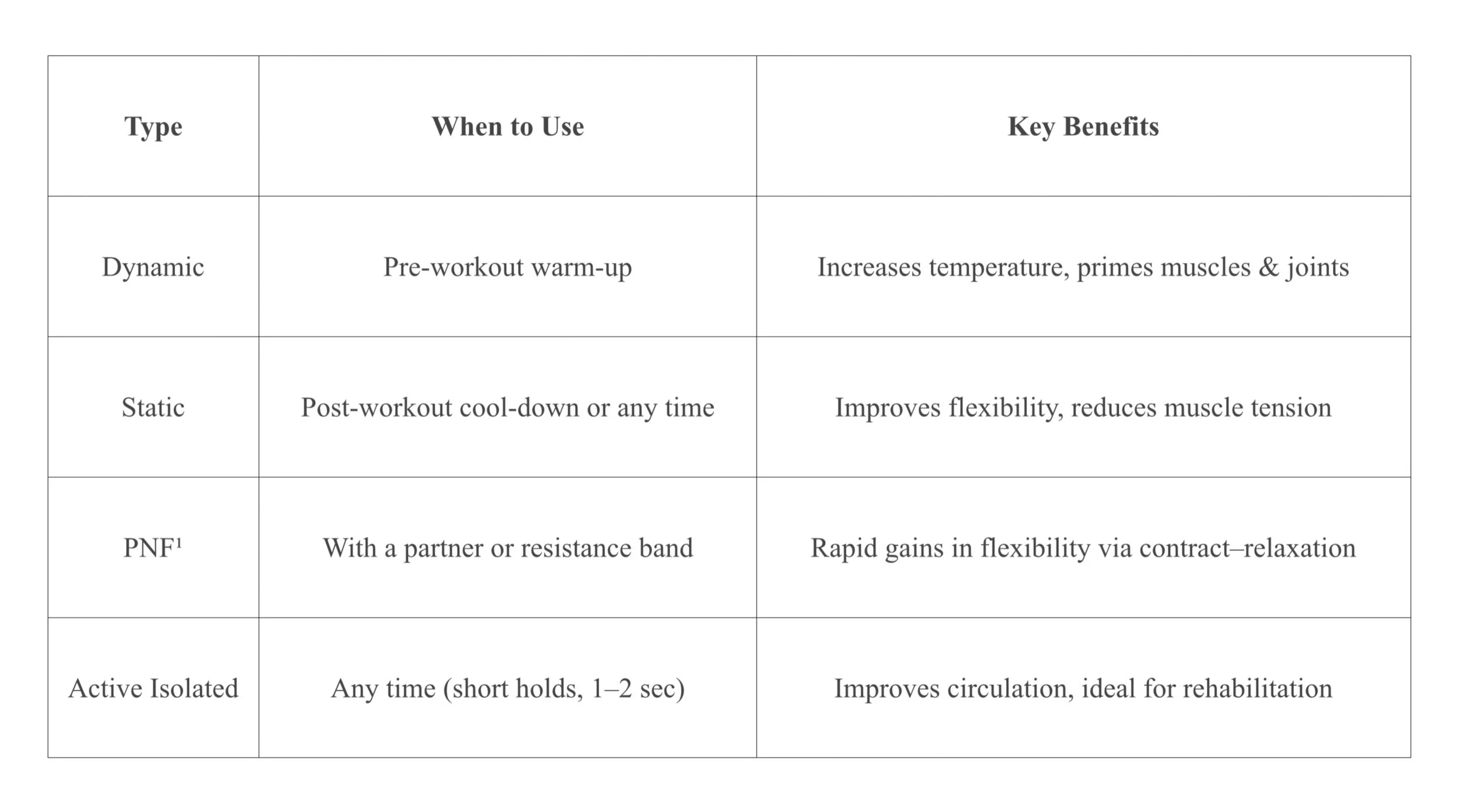Why Stretching is so Important
Stretching isn’t just a “nice-to-have” add-on to your workout—it’s a foundational practice with wide-ranging benefits for your body and mind. Here’s why it matters so much:
1. Enhances Flexibility & Range of Motion
• Muscle and Tendon Lengthening
Regular stretching gradually elongates muscle fibers and connective tissues (tendons and ligaments), which lets your joints move through fuller arcs.
• Everyday Function
Better flexibility makes tasks like reaching overhead, bending to tie your shoes, or twisting to look behind you easier and safer.
2. Improves Performance & Lowers Injury Risk
• Dynamic Warm-Up
Before exercise, dynamic stretches (leg swings, arm circles, walking lunges) raise muscle temperature and blood flow, priming your nervous system for explosive movement.
• Post-Exercise Recovery
Static stretches (holding a position for 20–30 seconds) after your workout help clear metabolic waste (like lactic acid), reduce muscle tightness, and speed recovery.
• Injury Prevention
Flexible muscles and balanced joint mobility distribute forces more evenly, reducing the chances of strains, sprains, and overuse injuries.
3. Corrects Posture & Balances Muscular Tension
• Counteracting Daily Habits
Sitting at a desk shortens hip flexors and chest muscles, while lengthening—and weakening—back extensors. Targeted stretches (e.g., hip flexor stretches, chest openers) restore balanced length and tension.
• Spinal Alignment
Releasing tight muscles around the spine improves alignment, alleviates back pain, and supports healthy posture throughout the day.
4. Boosts Circulation & Nutrient Delivery
• Increased Blood Flow
Stretching causes a mild “mechanical pump” in muscle tissues, enhancing circulation. Better blood flow means more oxygen and nutrients reach muscle fibers and connective tissues.
• Waste Removal
Improved circulation also helps remove metabolic byproducts, which reduces soreness and accelerates healing.
5. Promotes Relaxation & Mind–Body Connection
• Stress Reduction
Slow, deep stretching activates the parasympathetic (“rest and digest”) nervous system, lowering heart rate and cortisol levels.
• Mindfulness
Focusing on breath and muscle sensation during stretching cultivates body awareness, reduces mental clutter, and can even improve sleep quality.
6. Types of Stretching & When to Use Them
¹PNF = Proprioceptive Neuromuscular Facilitation
Quick Daily Routine (10 Minutes)
1. Hip Flexor Stretch (2 × 30 sec each side)
2. Hamstring Stretch (2 × 30 sec each side)
3. Chest Opener (1 × 30 sec)
4. Shoulder/Triceps Stretch (1 × 30 sec each arm)
5. Cat–Cow Flow (1 minute)
6. Child’s Pose (1 minute)
Bottom Line
Incorporating stretching into your daily routine—whether as part of a workout or on its own—yields immediate comfort and long-term gains in performance, injury prevention, posture, and mental well-being. Even a brief 5–10 minute session can pay dividends in how you feel and move every day.
Would you like to try our BBS Stretching & Body Conditioning Class for Free? Follow us on Instagram and send us a quick message there!



